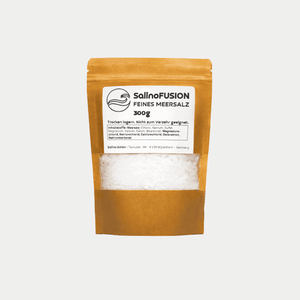The body does not forget – but it also remembers the good
Turning 50 isn't the end. It's a different chapter. One driven not by pressure to perform or youthful idealism – but by depth, clarity, and a new form of freedom. Yet as the mind and experience mature, the small setbacks often become more noticeable: your back aches longer in the morning, your knee hurts after gardening, your breath shortens when climbing stairs. It's a subtle adjustment to your body, which is changing.
During this transitional period, many people seek ways to reconnect with themselves—both physically and mentally. Yoga offers precisely that: no quick fixes, no overly ambitious promises. Instead, it's an invitation. An invitation to rediscover your own body—and to lovingly accept it as it is. Especially for people over 50, yoga can be not just exercise, but healing. Not just stretching, but a connection with yourself.
This article shows you five ways yoga can enrich your life after 50 – in a gentle, mindful, and profound way. It's based on sound knowledge, practical experience, and the questions that concern many in the second half of life. It's not a fitness plan. Rather, it's a guide to greater connection, strength, and inner peace.
1. Yoga strengthens – but in a different way than you think

Yoga offers a quiet strength in old age. Not one focused on muscle growth or performance. Rather, it comes from within – through conscious movement, posture, and breath. Many people over 50 experience for the first time that strength doesn't always have to be associated with effort.
After age 50, the body naturally begins to lose muscle mass – a process known as sarcopenia . However, studies show that just two yoga sessions per week can help slow this loss. Unlike traditional fitness programs, which often rely on rapid stimulation, yoga works with the nervous system. It calms rather than overwhelms. And that's precisely what makes it so effective – especially as we age.
Postures with a deep effect
Yoga exercises like downward dog or warrior pose not only strengthen the outer muscles. They also promote the deeper stabilizers – the muscles that protect our joints and keep us upright in everyday life. This becomes especially important after age 50, when fall prevention and stability become increasingly important.
At the same time, yoga trains body awareness. You learn to sense when your body truly needs something—and when rest is more valuable than activity. This isn't weakness. This is self-care.
Gentle strengthening for people with disabilities
People with mild osteoarthritis or chronic back pain particularly benefit from gentle Hatha or Yin Yoga. The exercises can be individually adapted – on a chair or floor, with props such as yoga blocks or a strap. This allows everyone to start at their own level.
An environment that provides mindful support is crucial. Many yoga teachers specialize in classes for people 50+—not as a niche, but out of conviction. Because this phase of life is less about performance and more about presence.
2. Mobility – back to inner and outer freedom

As we age, we often lose not only physical flexibility, but also something else: the playful curiosity to explore our bodies. Many people report that at 50, they suddenly feel how entrenched their patterns have become—in both their movements and their thoughts. Yoga can help resolve both.
Because flexibility isn't just a matter of the joints, but also of one's posture toward one's own body. Those who have learned to be rigid—out of fear of pain, tension, or missteps—need a gentle practice. One that builds trust. One that gives them the courage to stretch again—also in a figurative sense.
Fascia, flow and freedom
Modern yoga styles such as fascia yoga or gentle Vinyasa specifically help restore the natural gliding movements between muscles, tendons, and skin. Especially after age 50, the fascia—our body's connective tissue network—begins to stick together if it isn't exercised regularly. The consequences are well-known: stiffness, morning pain, and limitations in simple movements like bending or twisting.
Through flowing stretches and conscious breathing, mobility is regained bit by bit. Not in the form of youthful flexibility, but as a new ease in everyday life: zipping your jacket behind your back. Stepping into the bathtub without hesitation. Reaching for the wine glass on the top shelf without pain. Small victories, great freedom.
The mental aspect: Think flexibly
What happens physically affects the mind. Those who practice yoga regularly often notice inner changes as well: more openness, more serenity. Perhaps this is because their breathing becomes calmer. Perhaps because they learn to deal with tensions with letting go, rather than with pressure.
In each case, a new kind of self-confidence emerges—one that is not based on youth, but on depth. And that often begins with no longer viewing one's own body as "old" or "limited"—but as wise, experienced, and worthy of being moved mindfully.
3. Breath and mindfulness – healing from within

Breathing is the first thing we do when we come into the world – and the last thing when we leave. But in between, we often forget it. Especially in everyday life full of obligations, stress and
Due to digital sensory overload, many people breathe shallowly – especially as they age. Yoga brings the breath back into focus. And with it: a sense of control, calm, and inner space.
Pranayama – the art of conscious breathing
Breath control, known as pranayama , plays a central role in yoga. It's not just about deep inhalation and exhalation, but also about targeted techniques that calm, energize, or harmonize. Studies show that just a few minutes of conscious breathing exercises daily can lower blood pressure, improve sleep, and regulate the nervous system—especially important for people with cardiovascular problems or inner restlessness.
Especially for people over 50 who often suffer from sleep disorders or chronic stress, breathing is a powerful tool: simple, available at any time, with no side effects.
Mindfulness as an attitude
With the breath comes mindfulness . Through yoga, many people discover for the first time a stillness within themselves that is not empty, but rather soothingly filled with awareness. Mindfulness means arriving in the present moment without having to judge it. This attitude can be particularly healing during the transition to the second half of life: when parental roles change, professional responsibilities decrease, or the body sets new limits.
Yoga teaches us to approach change not with fear, but with curiosity. And that often begins quite quietly—in a moment when you sit on your mat, breathe, and feel: I am here. Right now. And that's enough.
4. Yoga affects the soul – emotional resilience through movement

Many believe yoga is primarily physical. But those who practice for a longer period of time realize that the most profound changes take place within. Especially after age 50, when life takes stock—with its highs, lows, and turning points—yoga can become an anchor. Not a cure-all, but a quiet space where healing begins.
Emotions in the body
Our emotions don't just reside in our heads. They manifest in our bodies – as tense shoulders after grief, as shallow breathing after fear, as pressure in the stomach after being overwhelmed. Yoga helps release these tensions, not analytically, but experientially. Every posture, every conscious movement opens the body – and with it, often hidden feelings.
Many people report suddenly crying in certain asanas – not from pain, but from relief. Not everything needs to be understood, named, or explained. Often, it's enough to just let it be. Yoga creates this space: mindful, safe, loving.
Resilience through self-regulation
From the age of 50, a period of change often begins: children leave home, parents become dependent on care, relationships change – or end. In addition, hormonal
Changes and new physical challenges. Yoga offers a way to avoid being helplessly exposed to these changes.
Through regular practice, a deeper connection to your inner self develops. Your ability for self-regulation grows. You learn to find inner peace – regardless of external circumstances. And that is perhaps the most valuable thing yoga can offer: a stable inner home that remains, even when everything changes outside.
5. Experience community – and rediscover yourself

Many people experience a profound shift in their social role after the age of 50. Friendships change, relationships become quieter, and some lose their social anchor with the end of their working life. At the same time, the need for genuine connection grows – beyond superficial conversations. Yoga can be a bridge here: to others – and to oneself.
Yoga is more than a mat
When you think of yoga, you might first imagine individuals in meditative silence. But yoga has long been a social experience as well. Classes for people 50+ often create a special atmosphere: less competition, more openness. Many report feeling truly welcome in a movement space for the first time – regardless of body shape, age, or previous experience.
Here, you're welcome to be a beginner. Here, you're welcome to ask questions. Here, you're welcome to simply be there. This creates community—not through volume, but through presence.
A safe space to develop
For many, yoga becomes a regular part of their week—not just physically, but emotionally as well. It's a space where they can express themselves as they are. A place where the focus isn't on performance, but on well-being. This can be healing, especially when they feel unbalanced by social changes, loneliness, or insecurities.
It's not about doing the splits. It's about finding yourself again. And often that happens more quietly than you think – in the silence after your last breath, in the gaze of another class member, in the feeling: I'm not alone.
Conclusion: Yoga over 50 – a return to yourself
It's never too late to start anew. Yoga shows us this in a quiet but powerful way. It doesn't require spectacular postures, a perfect figure, or youthful ambition – just the willingness to listen to your body again. And to take yourself seriously.
In a phase of life when so much is changing – physically, mentally, socially – yoga can be a stable companion. It strengthens without overtaxing, moves without exhausting, and opens without pushing. Those who practice regularly not only experience physical improvements but also gain inner strength: more serenity, more clarity, more compassion – with others and with themselves.
Whether you're just starting out or returning after a long break, yoga never feels "too late." It's not the destination that matters. It's the journey—and how you feel along the way.
Complementary thought: Salt air for breathing and mindfulness

Those who want to deepen their yoga practice—especially with regard to breathing, relaxation, and inner balance—can also benefit from a saline indoor environment. The use of finely evaporated salt, such as that produced by a mini-salt bath , can support the respiratory system and increase general well-being—completely without active action, in the background during meditation or savasana.


